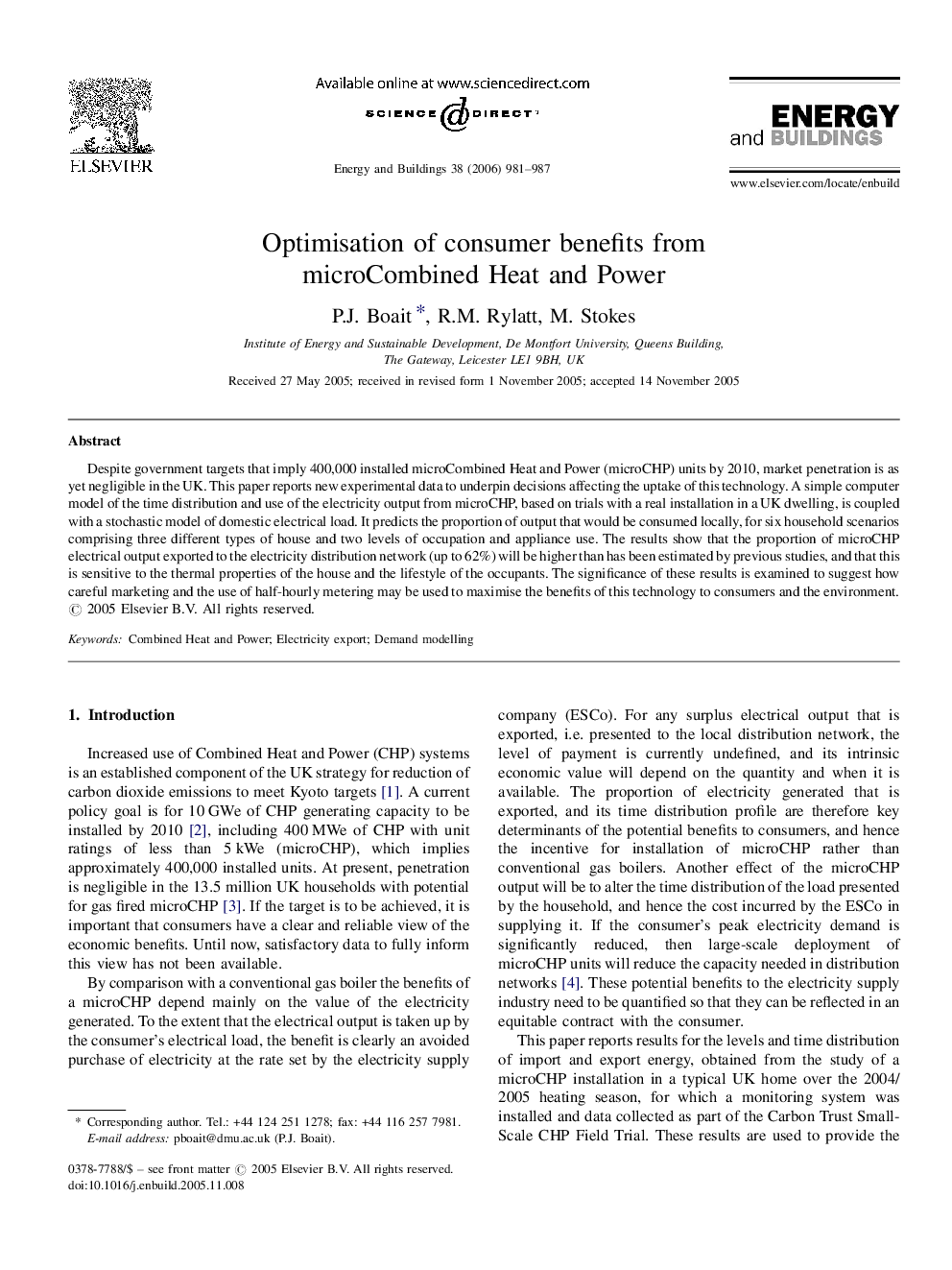| Article ID | Journal | Published Year | Pages | File Type |
|---|---|---|---|---|
| 265602 | Energy and Buildings | 2006 | 7 Pages |
Despite government targets that imply 400,000 installed microCombined Heat and Power (microCHP) units by 2010, market penetration is as yet negligible in the UK. This paper reports new experimental data to underpin decisions affecting the uptake of this technology. A simple computer model of the time distribution and use of the electricity output from microCHP, based on trials with a real installation in a UK dwelling, is coupled with a stochastic model of domestic electrical load. It predicts the proportion of output that would be consumed locally, for six household scenarios comprising three different types of house and two levels of occupation and appliance use. The results show that the proportion of microCHP electrical output exported to the electricity distribution network (up to 62%) will be higher than has been estimated by previous studies, and that this is sensitive to the thermal properties of the house and the lifestyle of the occupants. The significance of these results is examined to suggest how careful marketing and the use of half-hourly metering may be used to maximise the benefits of this technology to consumers and the environment.
